Elevate Retail Strategies By Scraping Product Data From E-Commerce Websites
Elevate Retail Strategies By Scraping Product Data From E-Commerce Websites
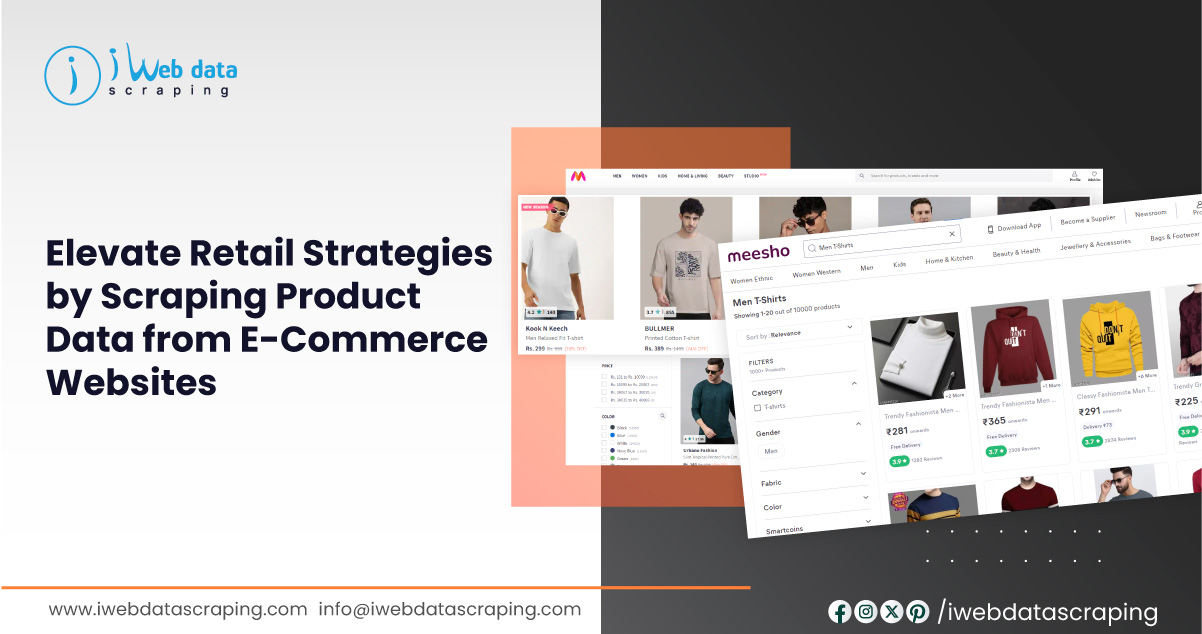
E-commerce data scraping is a strategic tool for businesses seeking a competitive edge in the digital marketplace. Companies can gain invaluable insights into market trends, competitor pricing strategies, and consumer preferences by extracting and analyzing data from online platforms. This data-driven approach empowers businesses to make informed decisions, refine marketing strategies, and enhance operational efficiency. Automated tools facilitate e-commerce data scraping for product information, customer reviews, and pricing data, offering a comprehensive understanding of the e-commerce landscape. However, ethical considerations, compliance with data privacy regulations, and responsible scraping practices are essential to ensure sustainable and lawful utilization of this powerful business tool.
List of Data Fields
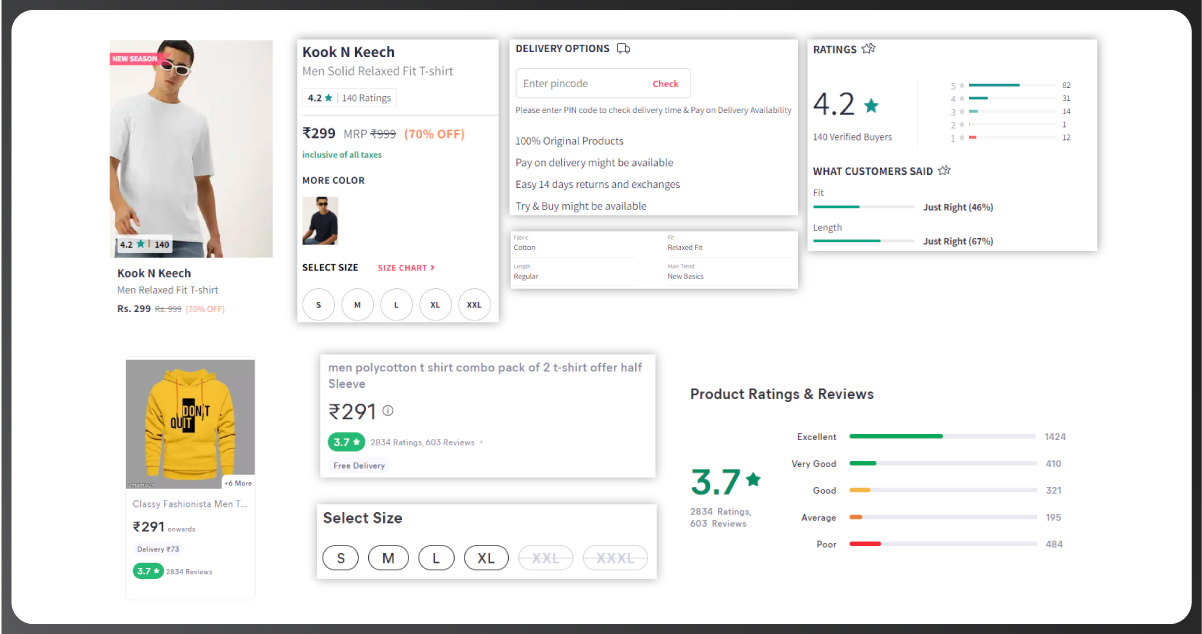
- Product Name
- Product ID
- Description
- Price
- Discounted Price
- Availability
- Product Images
- Reviews
- Ratings
- Category
- Sub Category
- Seller Name
- Shipping Methods
- Delivery Times
- Product Specifications
Requirements for Scraping E-Commerce Websites
In the rapidly growing realm of e-commerce, where numerous entrepreneurs invest in online businesses as a lucrative avenue, scraping e-commerce data from Meesho, Myntra, etc, emerges as a vital strategy for success. As the e-commerce landscape expands, statistics underscore the significance of this sector, with millennials spearheading the trend by conducting 54% of their purchases online. Moreover, with 25% of the global population engaging in online shopping, the market is poised for continued growth, with an estimated 2.14 billion digital buyers anticipated by 2021. Recognizing the intense competition, online shop owners increasingly turn to retail data scraping for automation to stand out. For optimal product improvement, enhanced sales, and increased conversions, shop owners leverage e-commerce data scraping services to:
Monitor Competitors:
- Keep a vigilant eye on competitors’ strategies and offerings.
- Understand Customer Preferences:
- Obtain valuable insights into customers’ preferences, needs, and satisfaction.
- Market Research and Intelligence
- Access crucial data for comprehensive market research and business intelligence.
Why Scrape E-Commerce Websites?

- Competitive Analysis: Scraping e-commerce websites provides valuable insights into competitors’ strategies, product offerings, and pricing. This data is essential for businesses looking to stay ahead by understanding what similar businesses are doing in a competitive market.
- Pricing Optimization: Businesses can optimize pricing strategies by scraping pricing information from competitors. It ensures that they remain competitive and offer attractive pricing to customers, leading to increased sales and market share.
- Product and Market Research: E-commerce data scraping facilitates detailed product and market research. Businesses can identify trending products, customer preferences, and market demands, enabling them to tailor their offerings to meet consumer needs effectively.
- Enhanced Customer Insights: Scraping customer reviews, feedback, and purchase patterns gives businesses valuable insights into customer preferences, satisfaction levels, and areas for improvement. This information helps refine products and services to better align with customer expectations.
- Automation for Efficiency: Automation through e-commerce data scraper streamlines various processes, such as inventory management, order processing, and customer service. This efficiency allows businesses to focus on strategic aspects of growth, innovation, and customer experience.
- Market Positioning and Strategy: Understanding market trends and consumer behavior through scraping enables businesses to refine their positioning and overall strategy. It aids in identifying niche opportunities, addressing gaps in the market, and making data-driven decisions for sustained growth.
Meesho: is a pioneering Indian social commerce platform founded in 2015. Connecting millions of small businesses with potential buyers empowers entrepreneurs to start and grow their online businesses with ease. Meesho’s user-friendly platform enables individuals to discover and sell diverse products through social media channels. With a mission to create a level playing field in e-commerce, Meesho has revolutionized how people buy and sell, fostering economic opportunities and entrepreneurship across India. Scrape Meesho product data to help access essential information on diverse merchandise, pricing strategies, seller trends, and customer preferences, facilitating insightful market analysis and strategic decision-making in the evolving social commerce landscape.
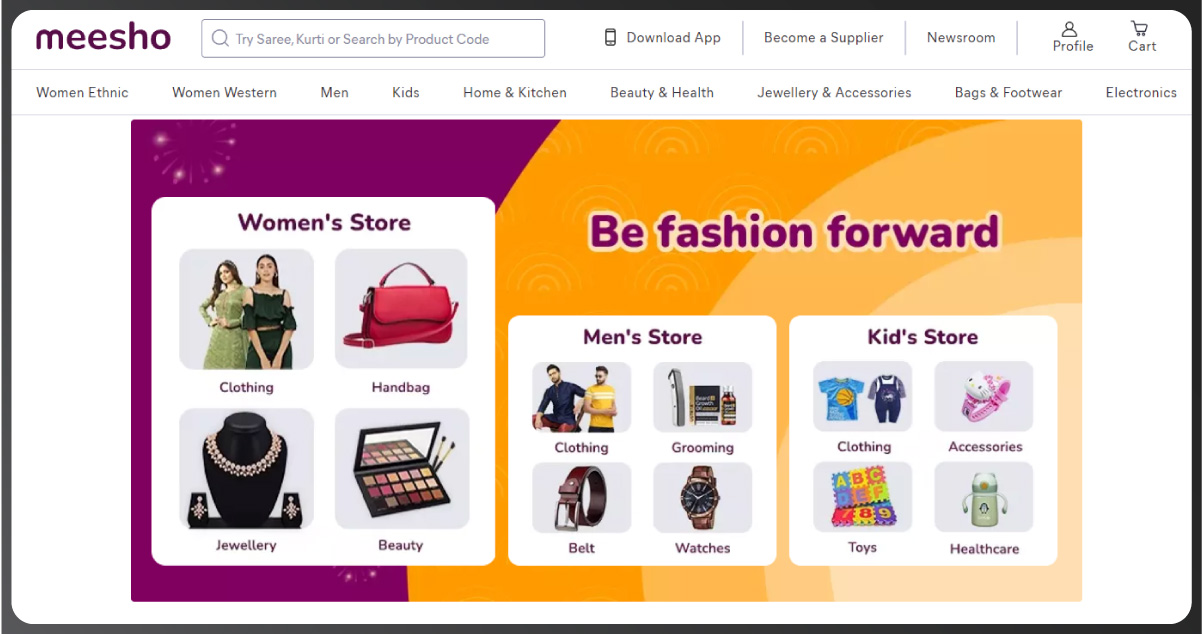
Myntra: Myntra is a prominent Indian fashion e-commerce platform that has transformed the online shopping experience since its inception in 2007. Acquired by Flipkart in 2014, Myntra offers a vast array of clothing, footwear, and accessories from leading brands. Known for its user-friendly interface and innovative features, Myntra has become a go-to destination for fashion enthusiasts. The platform continually introduces cutting-edge trends, providing a seamless shopping experience and contributing significantly to the evolution of India’s dynamic e-commerce landscape. Scrape Myntra product data to gather detailed information on product listings, pricing trends, customer reviews, and fashion preferences, enabling comprehensive market analysis and strategic decision-making in the dynamic realm of online fashion retail.
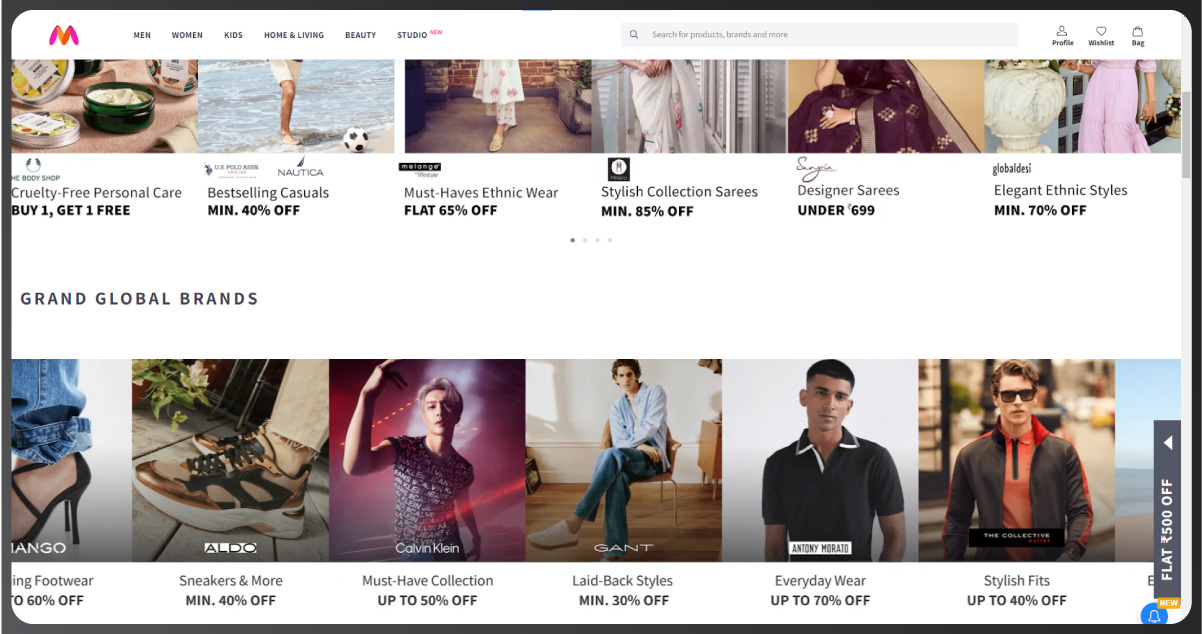
Amazon India: Amazon India, a subsidiary of the global e-commerce giant Amazon, has emerged as a critical player in the Indian online retail market. Since its launch in 2013, Amazon India has expanded its diverse product offerings, including electronics, fashion, and household goods. Renowned for its efficient delivery services and customer-centric approach, it has become a preferred choice for millions of Indian consumers. Amazon India continues to contribute significantly to the country’s digital economy, fostering innovation and transforming how people shop online. Scrape Amazon India product data to gain comprehensive insights into product listings, pricing dynamics, customer reviews, and market trends. It helps empower strategic decision-making and market analysis in the ever-evolving e-commerce landscape.
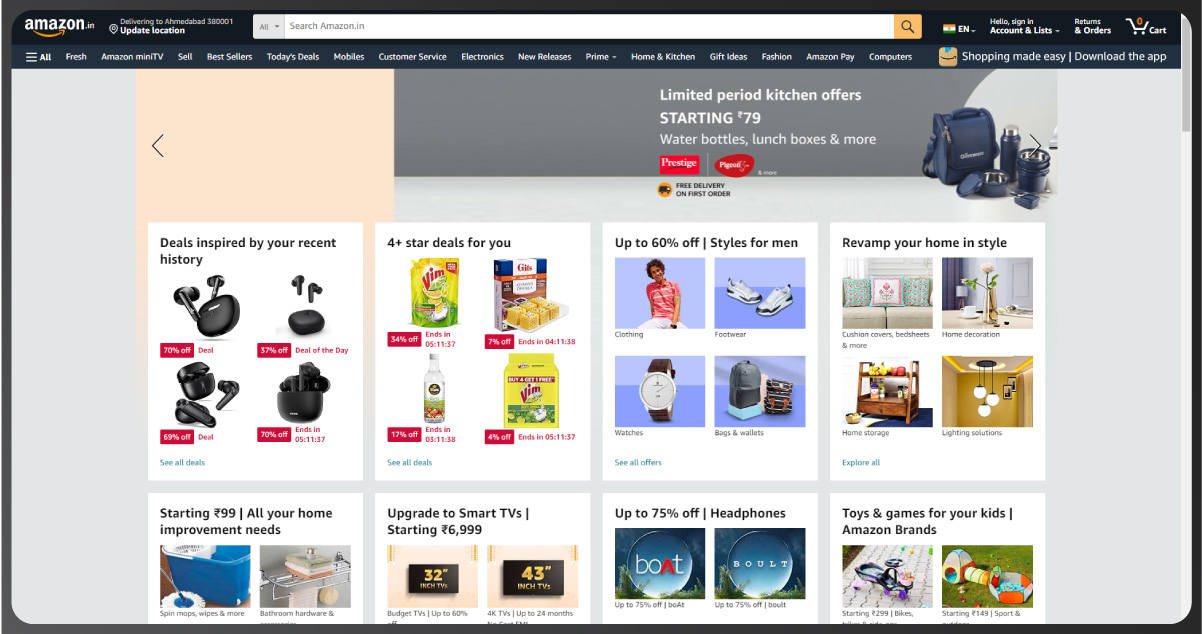
Flipkart: Founded in 2007, Flipkart is a leading Indian e-commerce platform that is pivotal in revolutionizing the country’s online retail landscape. Acquired by Walmart in 2018, Flipkart offers various products, including electronics, fashion, and household goods. Renowned for its customer-centric approach, it provides innovative features such as COD and easy returns. Flipkart has become a household name, contributing significantly to the growth of e-commerce in India and continuously evolving to meet the dynamic needs of its diverse customer base. Scrape Flipkart product data to extract detailed information about product listings, pricing, customer reviews, and trends, facilitating in-depth market analysis and strategic decision-making in the competitive e-commerce landscape.
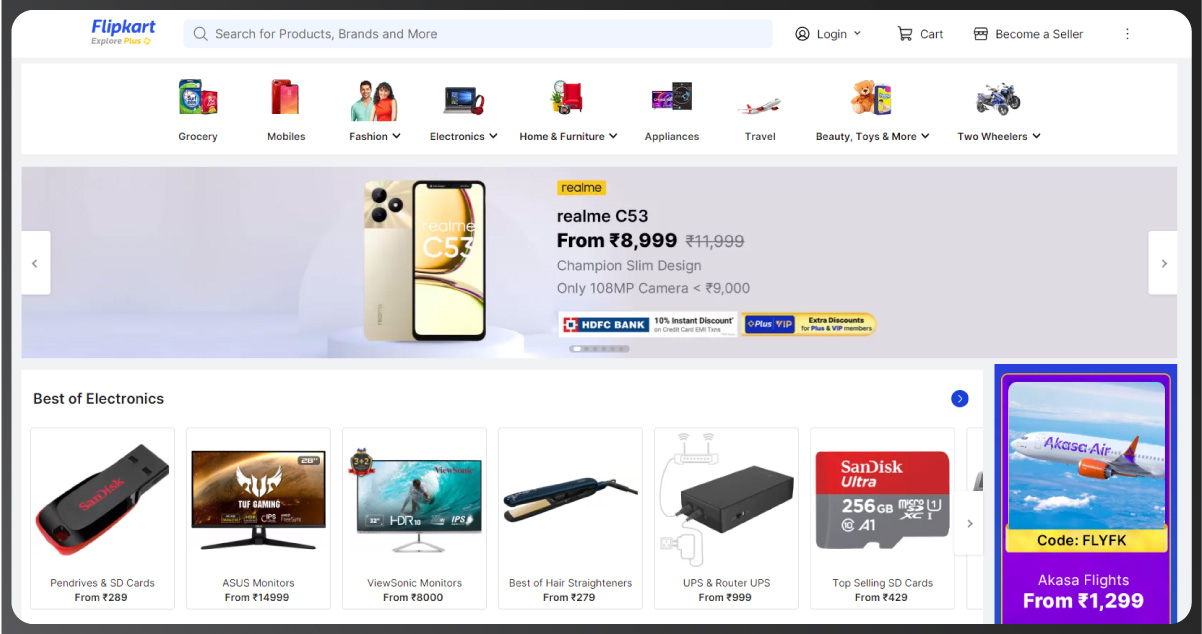
Ajio: Launched in 2016, Ajio is an Indian online fashion and lifestyle platform catering to diverse consumer preferences. Reliance Retail owns Ajio and curates a wide range of trendy clothing, footwear, and accessories from Indian and international brands. Known for its focus on unique and curated collections, Ajio offers a seamless shopping experience. The platform has gained popularity for its exclusive designs, regular discounts, and efficient delivery services, establishing itself as a destination for fashion-forward individuals in India. Scrape Ajio product data to gain insights into the latest fashion trends, pricing strategies, and product availability, enabling comprehensivemarket analysis and informed decision-making in the dynamic e-commerce landscape.
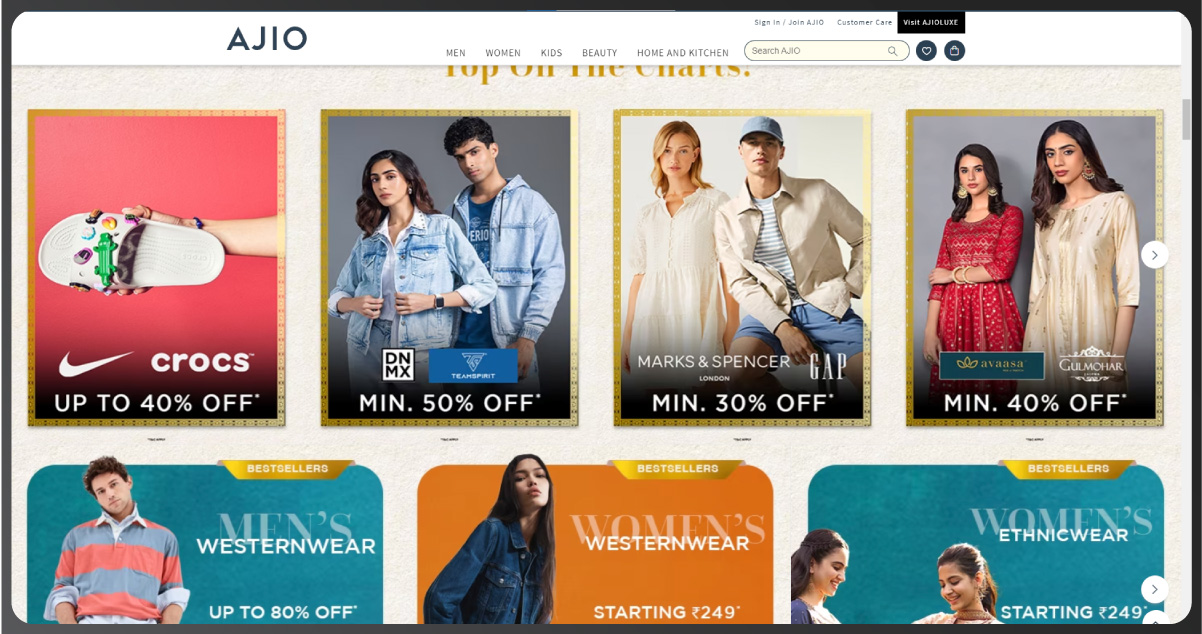
How do you create a strategy to scrape Retail Data from Meesho, Myntra, etc?
- Define Objectives: Clearly articulate the goals of your data scraping strategy, whether it’s for competitive analysis, pricing intelligence, or market research. Establishing specific objectives will guide the entire process.
- Legal Compliance: Ensure compliance with legal and ethical standards. Review the terms of service of each website (Meesho, Myntra, etc.) to understand scraping permissions and limitations and avoid violating any terms to maintain ethical data practices.
- Identify Data Sources: Specify the retail data you intend to scrape, such as product details, prices, customer reviews, and stock availability. Clearly define the scope to tailor your scraping efforts to meet specific informational needs.
- Choose Scraping Tools: Select appropriate tools or frameworks based on your technical expertise and project requirements. Popular tools include Beautiful Soup, Selenium, or specialized web scraping APIs. Consider the website’s structure and complexity in your tool selection.
- Implement Robust Crawling Techniques: Develop effective crawling techniques to navigate the website’s structure. Set up crawling patterns that respect website guidelines, prevent server overloads, and avoid detection as a potential threat to maintain a smooth scraping process.
- Handle Dynamic Content: As many e-commerce sites use dynamic content loading through JavaScript, ensure your scraping strategy accommodates these elements. Tools like Selenium, which supports dynamic content handling, can be invaluable for such scenarios.
- Rate Limiting and Politeness: Implement rate limiting and politeness in your scraping to avoid putting undue stress on the target websites. It involves controlling the frequency and speed of your requests to mimic natural user behavior and prevent server overload.
- Data Storage and Analysis: Establish a robust system for storing and analyzing scraped data. Choose appropriate databases or storage solutions, such as SQL or cloud storage, and implement data cleaning and processing steps to derive meaningful insights from the scraped retail data.
Always prioritize ethical and legal considerations in your scraping strategy, respecting the terms of service of the targeted websites. Regularly monitor and update your scraping process to adapt to changes in website structures and policies, ensuring a sustainable and responsible data harvesting approach.
#ScrapingProductDataFromECommerceWebsites,
#ScrapingecommercedatafromMeesho,
#ScrapeMeeshoproductdata,
#ScrapeMyntraproductdata,
#ScrapeAmazonIndiaproductdata,
#ScrapeFlipkartproductdata,
#ScrapeAjioproductdata,
